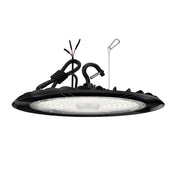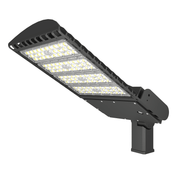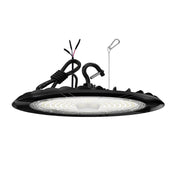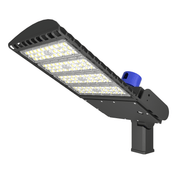Color rendering measures the degree to which a light source presents the color of an object, that is, the degree of color fidelity, and is a qualitative evaluation. Light sources with high color rendering have better color reproduction, and the colors we see are closer to natural primary colors (colors under the sun); light sources with low color rendering have poorer color reproduction, and the color deviation we see is also larger.
- What is a high color rendering index for lighting products?
- What are the advantages of lighting products with a high color rendering index?
- How to evaluate the color rendering index of a lighting product?
- What is the market prospect of lighting products with a high color rendering index?
- What is the price difference between high color rendering index lighting products and ordinary lighting products?
- Conclusion

What is a high color rendering index for lighting products?
The color rendering index (CRI) is a standard indicator that quantifies the ability of a light source to present the true color of an object. Its value ranges from 0-100. The higher the value, the closer the color of the object is to the natural light effect (such as daylight) under lighting. A high CRI means that the light source can accurately restore the color of the object and reduce color distortion, which is crucial for color-sensitive scenes (such as art displays or medical environments).
Definition and key parameters of high CRI
Range of values: High CRI usually refers to Ra (average color rendering index) values ≥90. Ra is the average value of the color reproduction of 14 standard color samples. ≥90 indicates that the light source has excellent color reproduction ability (for example, Ra=100 is ideal natural light). Ri (specific color rendering index) is for specific color samples (such as red or skin tone). High CRI products need to ensure that the Ri value is also high.
Technical basis: High CRI depends on the spectral power distribution of the light source. For example, LED or laser lighting can improve CRI values by optimizing phosphors or chip design (such as full spectrum technology), ensuring strong color uniformity and low angle dependence.
Importance and application scenarios
Improved visual quality: High CRI lighting (Ra≥90) enhances the color authenticity of objects, improves visual comfort and detail recognition, and is suitable for interior design, retail display and home environment.
Professional field needs: In photography, filmmaking, neonatal care and medical diagnosis, high CRI light sources (such as Ra>95) are essential to avoid color distortion affecting work accuracy.
Energy efficiency and trends: Combined with high-efficiency LED technology, high-CRI products can take into account energy saving and high-quality lighting (such as light efficiency above 240lm/W). In the future, more attention will be paid to the coordinated optimization of CRI, color temperature and spectrum.
For example, the UFO High Bay Light (industrial and mining lamp) has multiple optional configurations for color rendering index (CRI), the specific range is as follows:
📊 Color rendering index (CRI) range
Basic configuration
CRI ≥ 80: Most standard models use this configuration to meet the basic needs of industrial lighting (such as warehouses and factories).
Technical implementation: Achieve 130-160lm/W light efficiency while maintaining color rendering through 3030 high-power LED modules.
Advanced optional configuration
CRI ≥ 90 (high color rendering version): For scenes that require accurate color reproduction (such as quality inspection areas and display spaces), customized selection is required.
Special scene adaptation: Professional fields such as medical and art usually require CRI ≥ 90-955, but industrial lamps must mark whether they are high color rendering versions.

What are the advantages of lighting products with a high color rendering index?
Lighting products with high color rendering index have significant advantages in visual presentation, application adaptation, human health, etc., and can bring users a better lighting experience. Combined with the relevant content about color rendering index in the above text, its advantages will be elaborated in detail:
Accurately restore the true color of objects: lighting products with high color rendering index can highly restore the true color of objects under natural light and avoid color distortion. In art galleries, high color rendering index lamps allow visitors to see the most authentic colors and details of paintings, so that the color expression of artworks can be fully displayed; in studios, it can ensure the accurate presentation of the color of the subject, greatly reduce the workload of post-color correction, and improve shooting efficiency and work quality.
Meeting high requirements for special scenes: For scenes with extremely high color recognition requirements, such as jewelry display and high-end clothing display, high color rendering index lighting products are indispensable. In jewelry stores, such products can truly show the color and texture of jewelry, highlight the preciousness of jewelry, and attract consumers to buy; in high-end clothing stores, accurately restoring the color of clothing can help consumers more clearly judge whether the clothing meets their needs and aesthetics, improve shopping experience, and promote sales.
Improve visual comfort: When lighting products can accurately restore the color of objects, people's eyes do not need to over-adjust to adapt to distorted colors, thereby reducing visual fatigue. In environments where long-term work or study is required, such as offices and classrooms, high color rendering index lighting can effectively relieve eye fatigue, protect vision health, and create a more comfortable visual environment for users.
Expand the application field of lighting products: High color rendering index enables lighting products to be applied to more fields with strict color requirements, not only limited to commercial display and artistic creation, but also in professional fields such as medical diagnosis and scientific research. In the medical field, lights with a high color rendering index help doctors observe patients' skin, tissue color and other symptoms more accurately, providing a reliable basis for diagnosis; in scientific research experiments, precise color presentation can help researchers accurately identify color changes in experimental samples and ensure the accuracy of experimental results.
How to evaluate the color rendering index of a lighting product?
To evaluate the color rendering index of lighting products, we can cut in from the perspectives of professional instrument measurement and actual scene observation. We will introduce you to specific evaluation methods and key points in combination with the characteristics of lighting products.
Use professional instruments to measure
Spectrum analyzer: Spectrum analyzer is a common professional equipment for evaluating color rendering index. It can accurately measure the spectral power distribution of the light source, and calculate the color rendering index of the light source by analyzing the intensity of light of different wavelengths emitted by the light source. In specific operation, place the lighting product in a suitable test environment and connect the spectrum analyzer. The instrument will collect the spectral data of the light source and obtain the color rendering index value according to the calculation method specified by the International Commission on Illumination (CIE). This method is accurate in measurement and reliable in data. It is a commonly used evaluation method in professional fields such as scientific research and production quality inspection.
Color rendering index tester: There are also testers specifically used to measure color rendering index on the market. This type of instrument is relatively easy to operate and suitable for rapid testing. It detects the light source through a built-in sensor and directly displays relevant parameters such as the color rendering index. For example, on a lighting production line, a color rendering index tester can be used to conduct spot checks on mass-produced lighting products to promptly detect products with substandard color rendering indexes, thereby improving production efficiency and product quality control.
Actual scene observation and comparison
Standard color plate comparison: Prepare a set of standard color plates, such as the Munsell color card, which contains a variety of standard color samples. Under the illumination of the lighting product being evaluated, observe the color on the color plate and compare it with the color observed under a standard light source (such as daylight). If the color difference is small, it means that the color rendering index of the lighting product is high and can better restore the color of the object; conversely, if the color is obviously distorted, the color rendering index is low. This method is intuitive and easy to understand, and even non-professionals can make a preliminary judgment on the color rendering performance of the lighting product by observation.
Observation of actual objects: In actual use scenarios, select objects of different colors and materials, such as colored clothing, fruits and vegetables, paintings, etc., and observe the color performance of the objects under the illumination of lighting products. For example, in a clothing store, by observing the color reproduction of different colored clothing under the light, judge whether the color rendering index of the lighting product meets the needs. If the color of the clothing appears bright and real under the light, without color cast, it means that the color rendering performance of the lighting product is good; if the color is dim and distorted, the color rendering index may be low.

What is the market prospect of lighting products with a high color rendering index?
The market prospect of high color rendering index lighting products is extremely broad and is in a rapid development channel, which is mainly reflected in the following key aspects:
Strong consumer demand drive: With the improvement of people's quality of life and the enhancement of health awareness, the demand for high-quality lighting environment is becoming more urgent. High color rendering index lighting products can accurately restore the true color of objects, avoid color distortion, and bring users a more comfortable and natural visual experience, which is very popular in various scenarios such as home, office, and business. Taking the home scene as an example, when consumers choose ceiling lamps and table lamps, they are more and more inclined to high color rendering index products, hoping to create a warm home atmosphere with high color reproduction, and protect the vision health of their family members, especially children. According to the statistics of JD Big Data Research Institute, the overall transaction volume of table lamps in 2024 increased by 15% year-on-year, among which the year-on-year growth rate of vertical eye protection lamps exceeded 100%, and high color rendering index is one of the important characteristics of this type of eye protection lamps, which directly reflects the strong demand of consumers for high color rendering index lighting products. In the commercial field, high color rendering index lighting is indispensable in places with extremely high requirements for color display, such as art galleries, high-end clothing stores, and jewelry stores. In art galleries, it allows visitors to truly appreciate the original color charm of artworks; in high-end clothing stores and jewelry stores, accurate color presentation can significantly improve the display effect of goods, attract consumers to buy, and then promote merchants to purchase such lighting products.
Emerging application scenarios continue to expand: In the field of education, the classroom lighting environment has a significant impact on students' vision and learning effects. Lighting products with high color rendering index can provide light closer to natural light, reduce visual fatigue, and improve students' concentration and learning experience. For example, after the science and technology classroom of a school in Xinjiang adopted high color rendering index lighting with related technologies, students' concentration increased by 15% and reading fatigue decreased by 22%. Medical facilities also have an urgent need for high color rendering index lighting. Surgical shadowless lamps need to accurately restore the color of human tissues, assist doctors to clearly identify blood vessels, nerves and other fine structures, and ensure the accuracy of surgery; ward lighting uses high color rendering index products to create a comfortable environment and facilitate patient recovery. In addition, with the popularization of the concept of smart home, smart lighting systems have become an important direction for home upgrades. The integration of high color rendering index lighting products and intelligent control technology can automatically adjust the brightness and color of light according to different scenes and time to meet the personalized needs of users, further broadening the market application space.
Industrial policy support promotes development: Governments of various countries have introduced policies to encourage the development of green and healthy lighting industries. As an important part of them, high color rendering index lighting products have benefited greatly from it. my country has included semiconductor lighting and display technology in the "Outline of the National Medium- and Long-Term Science and Technology Development Plan (2006-2020)" and has given strong support. Some regions have also promoted lighting companies to increase their investment in high color rendering index technology research and development and product production through financial subsidies, tax incentives and other measures to promote the rapid development of the industry.
Technological innovation drives performance improvement and cost optimization: Researchers continue to conduct in-depth research and make breakthroughs in key technologies such as LED chips, phosphor formulas and optical design, which has led to steady performance improvement and gradual cost reduction of high color rendering index lighting products. For example, by selecting LED chips with more continuous spectrum and optimizing phosphor formulas, the color rendering index can be significantly improved, while improving optical design, reducing light loss and interference, and improving lighting effects. As technology matures and the scale of the industry expands, product costs are gradually decreasing, and prices are becoming more affordable, which will attract more price-sensitive consumers and further expand market share.
What is the price difference between high color rendering index lighting products and ordinary lighting products?











